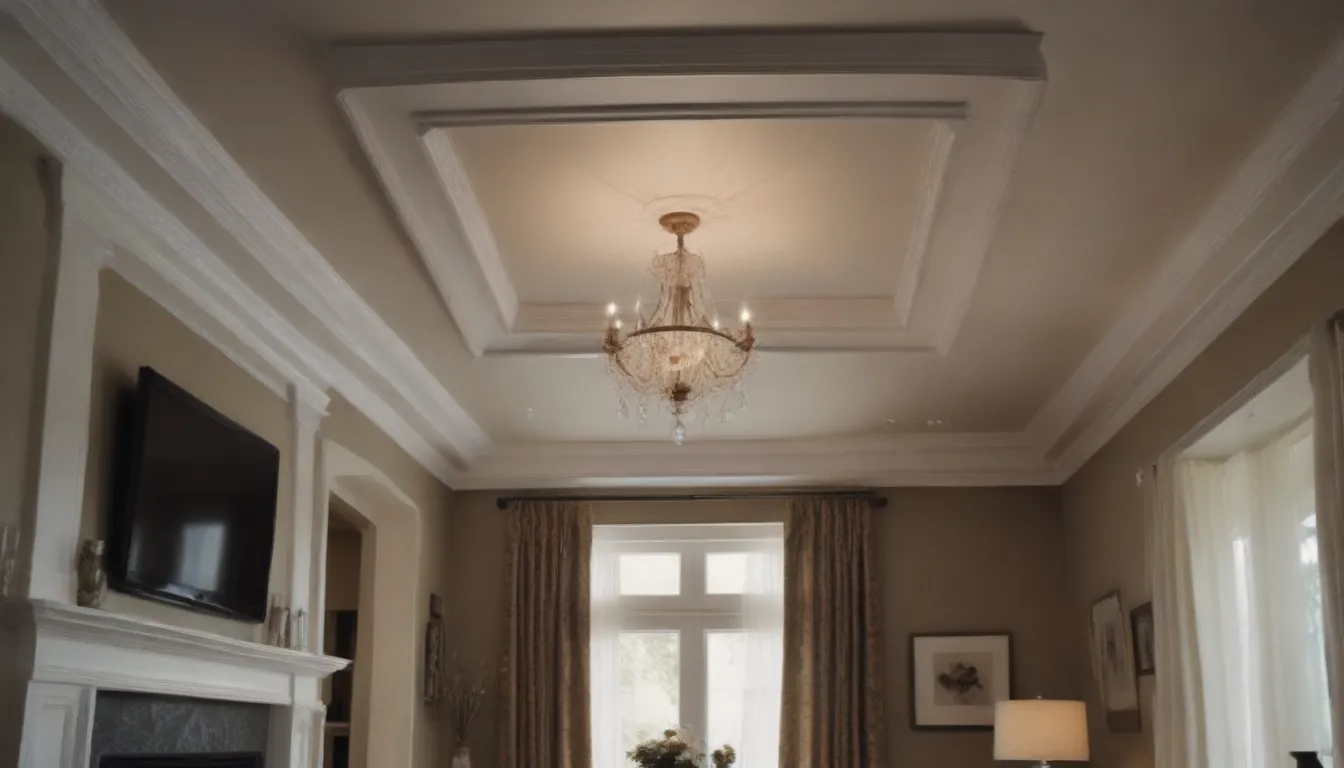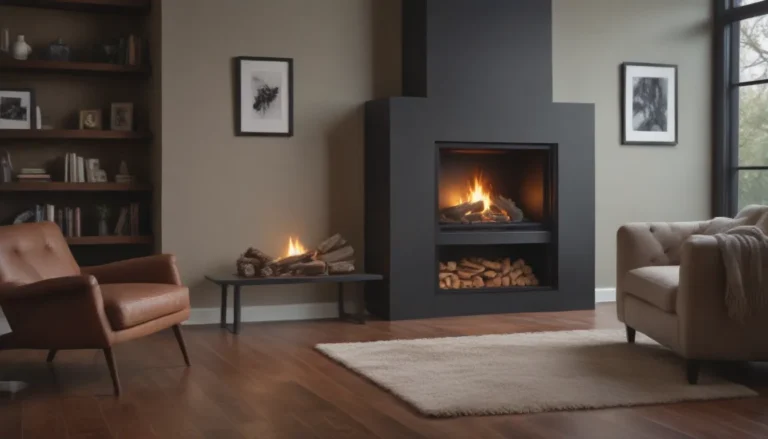Understanding Standard Ceiling Heights for Homes

When it comes to building or renovating a home, one of the crucial aspects to consider is the ceiling height. The height of the ceiling can greatly impact the overall look and feel of a space. In this comprehensive guide, we will delve into the various standard ceiling heights for different rooms in a home, the types of ceilings to choose from, how to measure ceiling height, challenges with high ceilings, and ways to improve a low ceiling. Let’s uncover everything you need to know about standard ceiling heights for homes.
Standard Ceiling Heights for Various Rooms
Understanding the standard ceiling heights for different rooms in a home is essential to ensure a harmonious design and functionality. Here’s a breakdown of the standard ceiling heights for various rooms:
- Basements: The ceiling height in basements typically ranges from 7 to 8 feet.
- Bathrooms: The standard ceiling height in bathrooms is usually around 6 feet 8 inches.
- Bedrooms: For bedrooms, the standard ceiling height is 8 to 9 feet.
- Dining rooms: The ceiling height in dining rooms is typically 8 to 9 feet.
- Kitchens: Kitchens usually have a standard ceiling height of 8 to 9 feet.
- Living rooms: The standard ceiling height in living rooms ranges from 8 to 10 feet.
It’s important to note that these are general guidelines, and the actual ceiling height may vary based on factors such as room size, architectural style, and personal preference.
Types of Ceilings to Choose From
The type of ceiling you choose can have a significant impact on the overall look and feel of a room. Here are some common types of ceilings to consider:
- Barrel vault ceilings
- Cathedral ceilings
- Cloister vault ceilings
- Coffered ceilings
- Groin vault ceilings
- Sloped ceilings
- Tray ceilings
Each type of ceiling has its own unique characteristics and can add a touch of elegance and style to your home. When selecting a ceiling type, consider the architectural style of your home and the overall aesthetic you want to achieve.
Factors to Consider When Choosing Ceiling Height
Several key factors should be taken into account when determining the ceiling height for a room. These include:
- Purpose of the Room: Consider the function of the room when deciding on the ceiling height. Rooms like bedrooms and bathrooms may not require as much overhead space as living rooms or dining rooms.
- Size of the Space: The size of the room plays a crucial role in determining the optimal ceiling height. Smaller rooms may feel cramped with high ceilings, while larger rooms may benefit from taller ceilings.
- Ceiling Style: The architectural style of the ceiling can influence the ideal height. Flat ceilings and coffered ceilings typically range from 8 to 10 feet, while cathedral and vaulted ceilings can go beyond 15 feet.
By considering these factors, you can determine the perfect ceiling height that suits your practical needs and aesthetic preferences.
How to Measure Ceiling Height
Measuring the height of a ceiling is a straightforward process that can be done with a tape measure. Simply position one end of the tape measure on the floor and extend it up to the ceiling. Read the measurement on the tape to determine the height of the ceiling at that specific location. For ceilings with varying heights, such as cathedral or tray ceilings, take measurements at multiple points to get an accurate range.
With advancements in technology, some smartphone apps now offer augmented reality features that can measure space without the need for a tape measure. However, it’s important to note that the accuracy of such apps may vary.
Challenges and Benefits of High Ceilings
While high ceilings can create a sense of openness and grandeur in a room, they also come with their own set of challenges. Here are some benefits and challenges of high ceilings to consider:
Benefits:
– Roominess: High ceilings can make a room feel more spacious and airy.
– Overhead Accessories: High ceilings provide ample space for overhead accessories like chandeliers, ceiling fans, and hanging lights.
Challenges:
– Heating and Cooling Costs: The cost to heat and cool a room increases with higher ceilings due to the greater volume of space.
– Maintenance: Cleaning and maintaining a room with a high ceiling can be challenging for shorter individuals.
– Aesthetics: Rooms with high ceilings may lack a cozy atmosphere and require extra effort for decorating and maintenance.
It’s essential to weigh these factors when deciding on the ideal ceiling height for your home to ensure a balance between aesthetics and practicality.
Strategies to Improve Low Ceilings
If you have a home with low ceilings, there are several ways to enhance the space and create the illusion of higher ceilings:
- Raise the Ceiling: Consider raising the entire ceiling by a foot or two to increase the vertical space in the room.
- Create Cathedral or Vaulted Ceilings: If possible, extend part of the ceiling into the attic to create cathedral or vaulted ceilings for a dramatic effect.
- Expose Joists: Remove all or part of the drywall ceiling to expose the joists, giving the room a loftier feel.
- Use Decorative Tricks: Utilize decor techniques like adding striped wallpaper, tall mirrors, or painting walls and ceilings the same color to visually elongate the space.
By implementing these strategies, you can transform a room with low ceilings into a more spacious and inviting environment.
Ideal Ceiling Height for Great Rooms
Great rooms, which typically serve as multipurpose living spaces, require careful consideration when determining the ceiling height. Ideally, the ceiling height for a great room should be around 14 to 16 feet to strike the perfect balance between spaciousness and aesthetic appeal. Factors such as the function of the room, resident heights, and the presence of overhead accents should be taken into account when deciding on the ceiling height.
While an 8-foot ceiling is considered lower than the standard height, it can still be suitable depending on individual preferences and room design. Opting for a 10-foot ceiling may come with higher construction costs, but it can offer additional design possibilities such as beam work, large windows, and ornate lighting fixtures.
In conclusion, the standard ceiling height for homes can vary based on room function, size, and architectural style. By carefully considering these factors and weighing the benefits and challenges of different ceiling heights, you can create a harmonious and visually appealing living space that meets your practical needs and aesthetic preferences.
Whether you’re building a new home or renovating an existing space, understanding standard ceiling heights and making informed decisions will help you achieve a seamless and stylish design that enhances the overall ambiance of your home.





